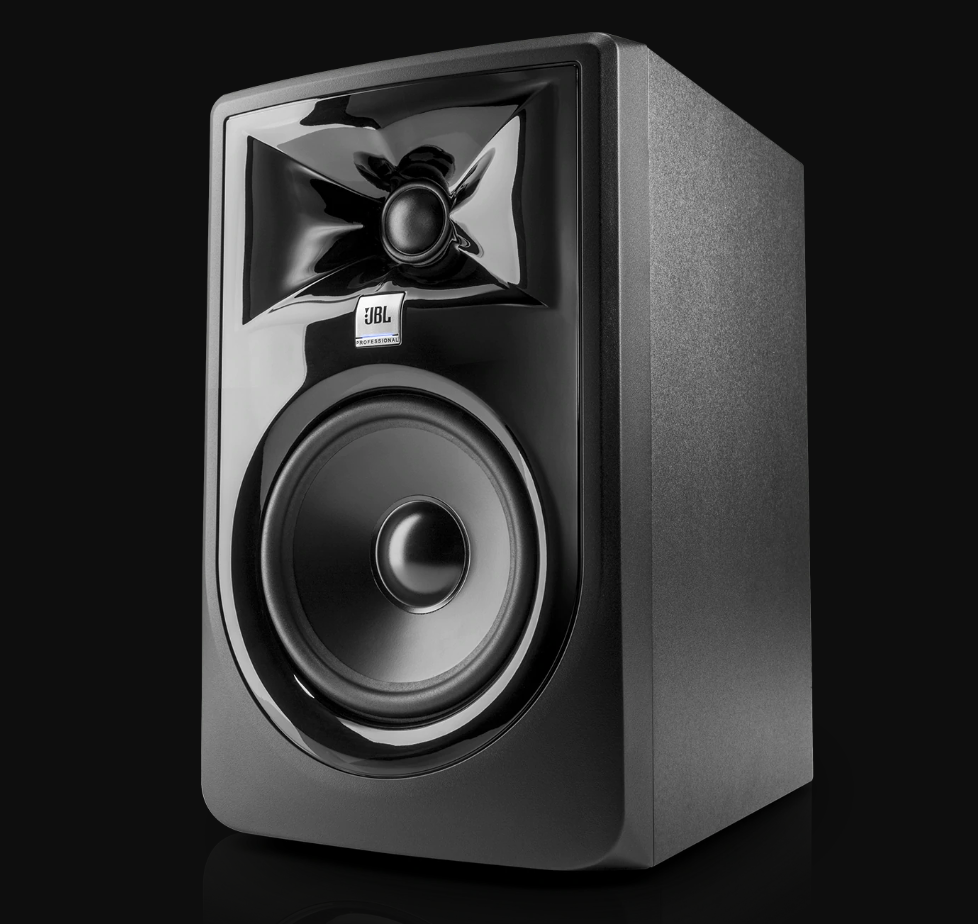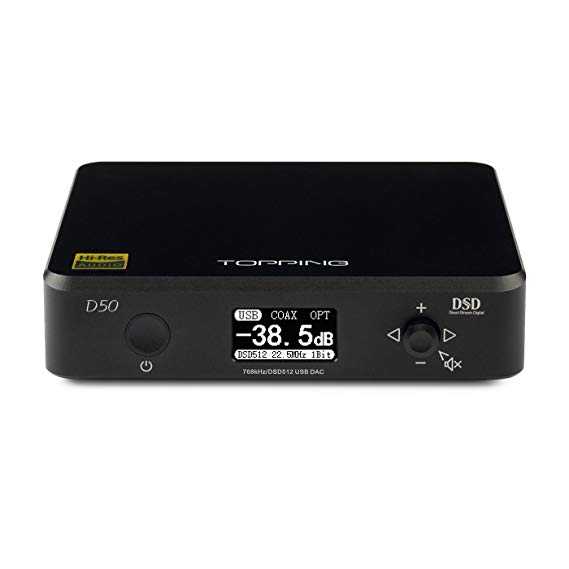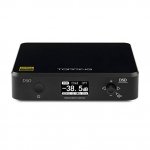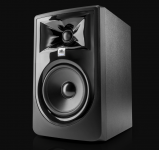OK! What HW is required/recommended?
//
Almost any computer will work, the trickiest part is getting a multichannel soundcard that you are happy with and fits your budget and the needs of your system.
I only want to do audio. I do own a Mac Mini with 2,4 GHz Intel Core 2 Duo / 2 GB 1067 MHz DDR3 / NVIDIA GeForce 320M 256 MB. Today it just serves files and run Squeezserver.
Will the Mac version of Jriver do what I want and is the HW enough do you think?
I'll install it and see what happens - will the plugin run?
//
Will the Mac version of Jriver do what I want and is the HW enough do you think?
I'll install it and see what happens - will the plugin run?
//
Using a Mac is harder to do all the measurements of before and after tweaking.
Not impossible, but a lot harder than a Windoze machine, where one can use the JRiver driver to route system audio through JRiver.
I love my Macs, but I have to admit that the other side gets it easier, for this application anyway.
You will also need a better DAC than your Mini's audio output. Doesn't need to be in the thousands of dollars, there are a few USB DACs that cost a $100 or so that are much better than the Mini's audio jack.
Not impossible, but a lot harder than a Windoze machine, where one can use the JRiver driver to route system audio through JRiver.
I love my Macs, but I have to admit that the other side gets it easier, for this application anyway.
You will also need a better DAC than your Mini's audio output. Doesn't need to be in the thousands of dollars, there are a few USB DACs that cost a $100 or so that are much better than the Mini's audio jack.
I do have a Soerkris DAC that I like quite a lot. I will use opto out as the DAM DAC does re-clocking. And REW is on Mac so measurements is well taken care of. My favourite player is Squeexbox but I don't know if that can house the m/s plugin. I will have to explore this a bit - but this is not a "computer audio thread" - but thanks for all the hints. I might get back on how to equalise a line source 
//
//
You will also need a better DAC than your Mini's audio output. Doesn't need to be in the thousands of dollars, there are a few USB DACs that cost a $100 or so that are much better than the Mini's audio jack.
Do you have a reference for this? I have a few Mac minis in use around the place as media servers, plus an iMac, and from my measurements the DACs are extremely good. Ditto with the DACs on the little Apple airport express boxes.
Do you have a reference for this? I have a few Mac minis in use around the place as media servers, plus an iMac, and from my measurements the DACs are extremely good. Ditto with the DACs on the little Apple airport express boxes.
Would love to, but it's something I've read a long time ago, on Gearslutz if I remember well.
It just stuck with me, but I haven't personally tested it.
But, I'm opened to reconsider my statement if you got something for me to read.
I know Macs were the thing to create music when MIDI started to pick up, way back to OS 6 or 7...
That'd be great if they still had good audio parts in them today.
I only want to do audio. I do own a Mac Mini with 2,4 GHz Intel Core 2 Duo / 2 GB 1067 MHz DDR3 / NVIDIA GeForce 320M 256 MB. Today it just serves files and run Squeezserver.
Will the Mac version of Jriver do what I want and is the HW enough do you think?
I'll install it and see what happens - will the plugin run?
//
I haven't used Jriver on Mac so I don't know, what I have done on Mac is used Soundflower to capture the audio output and input that in AU Lab to run plugins and then the audio goes back out of the Mac hardware, any player can then be used on the Mac.
Squeeze stuff doesn't have native plugins available, there is one from inguz audio for room correction that used to work not sure if it still does. It can be run in conjunction with BruteFIR on linux, there is a fork a BruteFIR for Mac but I have never tried it.
Mac audio hardware is usually pretty good, they have been using CSXXXX DAC chips in almost every device and they do a pretty good job considering. The headphone chip in my Macbook pro is very good and holds it's own against most of the other DAC's I have built.
Brilliant thread.
Well done fluid for constructing your speakers and getting such good results. I would love to embark on a similar journey, but I don't really know if I have the time/patience/dedication/energy required.
Fluid, did you track down the cause of one channel of your amplifier cutting out? Was it the DC protection being triggered by sub-sonic signals?
Well done fluid for constructing your speakers and getting such good results. I would love to embark on a similar journey, but I don't really know if I have the time/patience/dedication/energy required.
Fluid, did you track down the cause of one channel of your amplifier cutting out? Was it the DC protection being triggered by sub-sonic signals?
Thanks! It certainly wasn't easy but nothing worth doing ever isBrilliant thread.
Well done fluid for constructing your speakers and getting such good results. I would love to embark on a similar journey, but I don't really know if I have the time/patience/dedication/energy required.
I haven't fully tested it by removing the dc protection triggers but it makes sense based on when it happens.Fluid, did you track down the cause of one channel of your amplifier cutting out? Was it the DC protection being triggered by sub-sonic signals?
Update: No Array Progress
It's been a long time since I posted anything and even longer since I have had the arrays working or any speakers at all since I moved house, changed states and jobs all at the same time.
I am hopeful that one day soon I will get them back working and safe from a climbing toddler, which is the main reason they have been inactive.
I have recently bought a pair of JBL LSR305 MKII speakers to put next to my TV so I can listen to music and play movies through them.

I also bought a Topping D50 DAC as I wanted something with a physical volume control as well as one that could be controlled through alsamixer on linux. It's a nice little unit about the size of an apple TV.

The streaming setup is a little convoluted but it is working very well. I have got Jriver setup as a DLNA server doing volume levelling and DSP on my main server which uses volumio on a cubox-i as a renderer. I am using JRemote on an Android tablet to select and play music from my Jriver library to volumio. The volume control from JRemote controls volumio which in turn controls the hardware volume control in the sabre DAC. The only slight annoyance is that the volume display on the DAC doesn't change unless the physical buttons are pressed.
I like this setup as it allows all the DSP to be performed on a server machine and a small headless box to be in the living room. It also means I can use any windows VST for DSP without having to use windows as the platform for the player
It's been a long time since I posted anything and even longer since I have had the arrays working or any speakers at all since I moved house, changed states and jobs all at the same time.
I am hopeful that one day soon I will get them back working and safe from a climbing toddler, which is the main reason they have been inactive.
I have recently bought a pair of JBL LSR305 MKII speakers to put next to my TV so I can listen to music and play movies through them.
I also bought a Topping D50 DAC as I wanted something with a physical volume control as well as one that could be controlled through alsamixer on linux. It's a nice little unit about the size of an apple TV.
The streaming setup is a little convoluted but it is working very well. I have got Jriver setup as a DLNA server doing volume levelling and DSP on my main server which uses volumio on a cubox-i as a renderer. I am using JRemote on an Android tablet to select and play music from my Jriver library to volumio. The volume control from JRemote controls volumio which in turn controls the hardware volume control in the sabre DAC. The only slight annoyance is that the volume display on the DAC doesn't change unless the physical buttons are pressed.
I like this setup as it allows all the DSP to be performed on a server machine and a small headless box to be in the living room. It also means I can use any windows VST for DSP without having to use windows as the platform for the player
Attachments
I quite like what I am hearing from the baby JBL's especially considering the price of them. For now I have them set with some bass and treble cut from the onboard switches which is giving a reasonable balance. They are mounted in a pretty terrible position acoustically but that is the only place they can go so...
It will be interesting to see what happens when I can get the mic out and run some measurements and DSP correction. They serve well enough as is for now in any case for casual listening.
I have tried the Mid side EQ with these. It does not have the same effect as it did with the arrays but they also are not likely to have the same frequency balance yet either. I still prefer what it does for vocals over not having it on but more tweaking and testing is needed, something I struggle to find the time for now. So it does do something to non array speakers.
Another interesting thing about them is the shape of the waveguide which will introduce some diffraction, in much the same way as the SEAS DXT tweeter used by Kii does for the purpose of pattern control.
I was reminded of that by a comment wesayso made in another thread about avoiding diffraction. I notice the imaging on these speakers much more than I usually do in that they place the instruments in the stereo field in a well defined way.
It will be interesting to see what happens when I can get the mic out and run some measurements and DSP correction. They serve well enough as is for now in any case for casual listening.
I have tried the Mid side EQ with these. It does not have the same effect as it did with the arrays but they also are not likely to have the same frequency balance yet either. I still prefer what it does for vocals over not having it on but more tweaking and testing is needed, something I struggle to find the time for now. So it does do something to non array speakers.
Another interesting thing about them is the shape of the waveguide which will introduce some diffraction, in much the same way as the SEAS DXT tweeter used by Kii does for the purpose of pattern control.
I was reminded of that by a comment wesayso made in another thread about avoiding diffraction. I notice the imaging on these speakers much more than I usually do in that they place the instruments in the stereo field in a well defined way.
The streaming setup is a little convoluted but it is working very well. I have got Jriver setup as a DLNA server doing volume levelling and DSP on my main server which uses volumio on a cubox-i as a renderer. I am using JRemote on an Android tablet to select and play music from my Jriver library to volumio. The volume control from JRemote controls volumio which in turn controls the hardware volume control in the sabre DAC. The only slight annoyance is that the volume display on the DAC doesn't change unless the physical buttons are pressed.
I like this setup as it allows all the DSP to be performed on a server machine and a small headless box to be in the living room. It also means I can use any windows VST for DSP without having to use windows as the platform for the player
Had to read this twice...
But I like your approach. I'd love to have a small footprint little unit but with the power of a full PC with DSP behind it. Looks like you have achieved that, and I am mighty interested to learn more about this.
But, I also watch movies with my setup. Could it be working for movies too?
I see they have 4 models of that cubox... which one would you recommend? with WIFI, or just plugged in? Number of cores?
Thanks Byrtt, me too. I bought the D50 because it measured well and had the features I needed. I was interested to test out one of new Sabre chips, still very difficult to tell the difference between any well designed DAC to me.Good taste for high value gear there fluid, that D50 get excelent objective performance numbers over at ASR site, look forward you get arrays up running into their new home, so far enjoy D50/LSR305 MKII : )
Ha ha yes it is hard to explain it. Volumio won't work with movies as it is audio only, but another distro like libre elec might work. I have a libre elec setup on an sdcard so I might be able to test it for you. The movies would have to be in Jriver's library which mine aren't so I would have to fix that.Had to read this twice...
But I like your approach. I'd love to have a small footprint little unit but with the power of a full PC with DSP behind it. Looks like you have achieved that, and I am mighty interested to learn more about this.
But, I also watch movies with my setup. Could it be working for movies too?
I see they have 4 models of that cubox... which one would you recommend? with WIFI, or just plugged in? Number of cores?
I got the idea from archimago Archimago's Musings: SET-UP: Low Power Linux Audio Player (ODROID-C2 & Volumio 2)
I was going to try dsp on the player but for music the setup I have now works great. I needed the remote volume control so I used volumio.
I used a cubox because I had it sitting there doing nothing, mine is the dual core i2, I would probably choose something like the new Raspberry Pi if using wifi, or the Asus Tinkerboard , or Odriod C2 if I was buying now.
I couldn't say if that was the difference or if it was less room interaction due to the narrower directivity or something else. If I can get some damping panels made for the arrays when they find a new home, I might be able to come a conclusion on the why. The arrays have opened up my ears to things I hadn't paid much attention to before so it could also be thatCool Fluid.
I also prefer a point source for the imaging precision you describe.
Ha ha yes it is hard to explain it. Volumio won't work with movies as it is audio only, but another distro like libre elec might work. I have a libre elec setup on an sdcard so I might be able to test it for you. The movies would have to be in Jriver's library which mine aren't so I would have to fix that.
I got the idea from archimago Archimago's Musings: SET-UP: Low Power Linux Audio Player (ODROID-C2 & Volumio 2)
I was going to try dsp on the player but for music the setup I have now works great. I needed the remote volume control so I used volumio.
I used a cubox because I had it sitting there doing nothing, mine is the dual core i2, I would probably choose something like the new Raspberry Pi if using wifi, or the Asus Tinkerboard , or Odriod C2 if I was buying now.
Thanks, I'll have a read about it.
The Asus and the RPi are available here, but not the Odriod, and it is out of stock on their site (plus the shipping would probably be expensive).
The RPi looks quite under powered compared to the other two, but since it is only used as a remote, that might work ok... unless I decide to do otherwise, then the Asus would open the doors for future-proof projects.
Had a quick read.
Hmmm... maybe for my next setup, since I already have the Mac mini acting as a server in place, and USB DAC connected directly. I control the headless Mini with VNC.
There are some points in that article that ticked me and felt wrong, especially this one at the end:
So many out there do indeed believe in the dogma of "big numbers are better", seems that Archimago also fell into that nonsense hole....
Anyway, thanks for the share, fluid!
Hmmm... maybe for my next setup, since I already have the Mac mini acting as a server in place, and USB DAC connected directly. I control the headless Mini with VNC.
There are some points in that article that ticked me and felt wrong, especially this one at the end:
Final note: Because as an audiophile big numbers are better, I will usually upsample everything to 4fs (all 44.1kHz upsampled to 176.4kHz, all 48kHz to 192kHz) for internal calculations and output to the TEAC DAC. Easily done:
So many out there do indeed believe in the dogma of "big numbers are better", seems that Archimago also fell into that nonsense hole....
Anyway, thanks for the share, fluid!
You can use Jriver in a client server setup too, which should be fine with video. Volumio is great for stereo as everything can be controlled via a web browser page. I was going to buy a Tinkerboard to try DSP on the player side but found the server DSP on the cubox I had worked for what I needed it for.Had a quick read.
Hmmm... maybe for my next setup, since I already have the Mac mini acting as a server in place, and USB DAC connected directly. I control the headless Mini with VNC.
There are some points in that article that ticked me and felt wrong, especially this one at the end:
So many out there do indeed believe in the dogma of "big numbers are better", seems that Archimago also fell into that nonsense hole....
Anyway, thanks for the share, fluid!
I think that may have been tongue in cheek from him, from what I understand from other blog posts is he is upsampling to avoid the DAC's internal reconstruction filter and using his own recipe via sox to replace it.
Archimago's Musings: MUSINGS: More fun with digital filters! Archimago's "Goldilocks" Intermediate Phase suggestion...
Does anyone know how driver fs physically changes when there are multiple drivers. I'm sure this has come up somewhere.
BTW
I just converted an old laptop to a music server. Ended up running ubuntu linux with a behringer UCA202. VLC media player is great. Lean and mean. For any high end DSP though my go to software is equalizer APO which is only available through windows. The linux communities answer to everything seems to be new versions of linux, instead of developing software.
BTW
I just converted an old laptop to a music server. Ended up running ubuntu linux with a behringer UCA202. VLC media player is great. Lean and mean. For any high end DSP though my go to software is equalizer APO which is only available through windows. The linux communities answer to everything seems to be new versions of linux, instead of developing software.
- Home
- Loudspeakers
- Full Range
- Full Range TC9 Line Array CNC Cabinet

